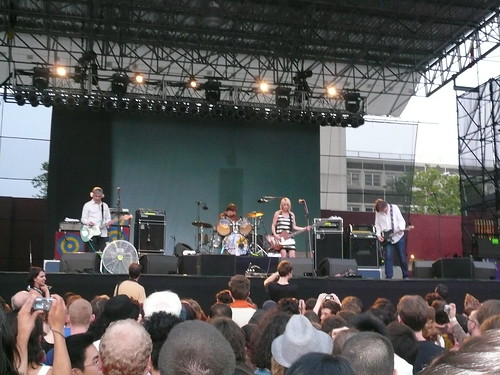
Yow, the conservation of (blogging + life) holds true. I'm just back from a week in Montreal + Vermont, 5 days of which were spent attending the "
ETD-HIC" (Early Time Dynamics in Heavy Ion Collisions) workshop at McGill. The workshop was mainly concerned with various approaches to modeling and measuring the microscopic dynamics of the very early stages of a nucleus-nucleus collision. Of course, many people think that this is easy: nuclei are made of hadrons, hadrons are made of quarks (and gluons), and we know the rules by which quarks and gluons interact. Sad part is, it's not: the stuff we make at RHIC acts far too much like a fluid to be merely composed of particulate quarks and gluons bouncing around via pair-wise interactions. So it was a lot of discussion of Color Glass Condensates, Color Fields (w/ Wiebel instabilities), Lattice QCD, etc., and various ways of probing these dynamics experimentally (especially "hard probes" like QCD jets and heavy quarks.)
Naturally, I was there
pushing my favorite worldview: that most of the data points us to considering a very rapid equilibration of the system. So rapid that it might as well be immediate, or on size scales comparable to that of the Lorentz contracted nucleus (i.e. a size that decreases linearly with energy). Regardless of that precise time, it seems to thermalize so fast that the initial configuration of the nucleons themselves are "frozen" in time (e.g. as shown above, with the green circles representing the "participating" nuclei), and serve to initialize the spatial distribution of the matter. This then evolves hydrodynamically (ideal or otherwise) until it freezes out into the particles that hit our detectors. At the very least, one seems to need to consider this lumpy, fluctuating initial state to capture various systematics of the data (e.g. how it varies with system size, shape, etc.) Neat stuff (which is why I like to talk about it!)

 And maybe the song about the Preppie Murderer ("Eliminator, Jr."), whom I could find namechecked in only one online review -- how quickly things move into the past.
And maybe the song about the Preppie Murderer ("Eliminator, Jr."), whom I could find namechecked in only one online review -- how quickly things move into the past.




